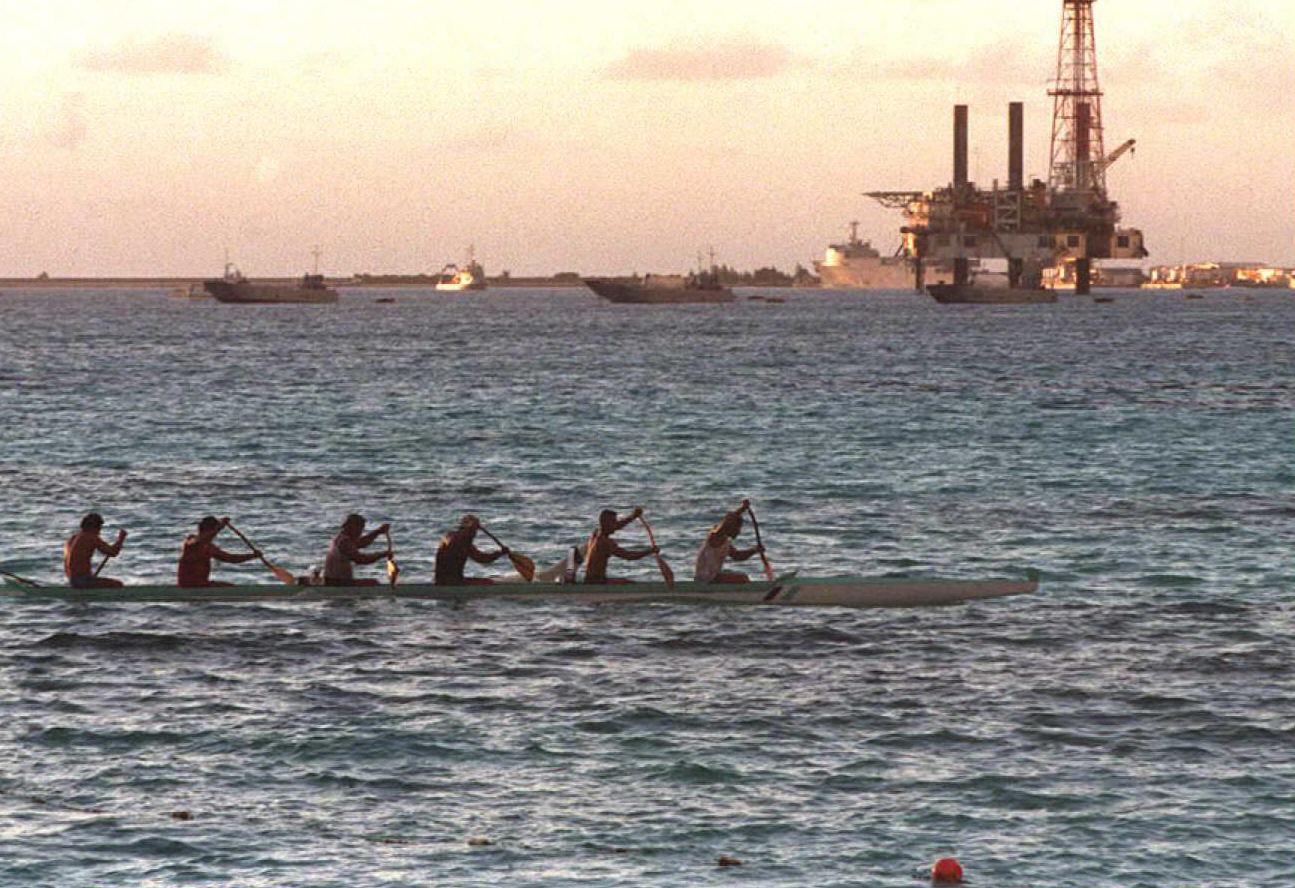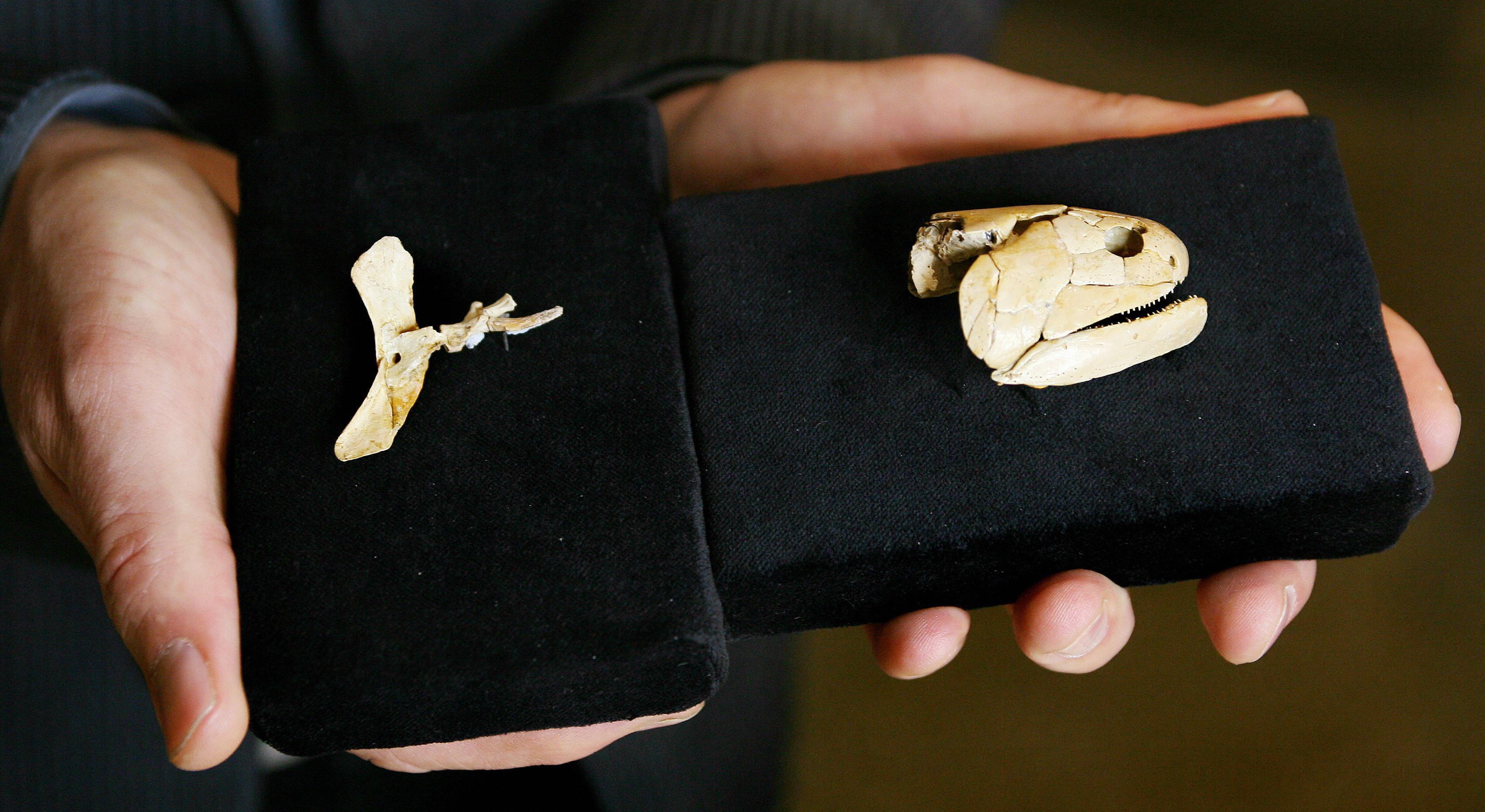This question originally appeared on Quora.
Answer by James Pitt, human evolution biology undergrad at Harvard University:
Note: The Devonian period lasted from about 420 million years ago until about 360 million years ago.
Short version: They’d have to rely heavily on fishing to survive. If they got to start out with modern fishing boats, harpoons, and durable nets, they’d do well. If not, it would be much more difficult. They’d likely have to travel around using up all the large plants in an area before moving to the next, and rely on aquatic resources for the bulk of their diet. Either way, the later in the Devonian they started out, the better off they’d be.
I’ll assume a group of Homo sapiens who know as much as we do today about the plant and animal life of the time. This is because the Universal Edibility Test takes a long time to perform, assuming they don’t even know how to do that would make the trial-and-error even worse, and I don’t want them to starve to death while figuring out what they can eat.
I’ll also assume that this is at least a minimum viable population, because saying they’d all die out from genetic disease is boring. We don’t really know how small the MVP for humans is. Tristan de Cunha and Pitcairn Island were settled with about 20 people and the former has problems with inbreeding, but it’s only been about 200 years, which is too short a time to see what problems would arise.
Let’s say they start out somewhere near the equator. The climate was survivable. The atmosphere had about 75 percent of the oxygen it does today; but there’s a city with 55 percent of the oxygen at sea level today, so that’s well within what we can manage. The temperature wasn’t too bad either, around 86 Fahrenheit.
Tools do matter a bit. I don’t know enough geography to say where one could expect good deposits of flint, obsidian, or other tool-making rocks, so I’ll assume they’re available. If they start in the Middle Devonian, I’m going to assume that progymnosperm wood is similar enough to the wood of modern trees to work for hafting and lighting fires.
If they start before that,z the closest thing is the stems of Prototaxites and Cooksonia. Both of those might have been firm enough to be useful since they were firm enough to support weight, but I wouldn’t count on them. Another big problem is cordage. Nets and ropes are incredibly handy. There’d be no animal sinews or modern plant fibers to make good ones; the closest would probably be from braiding together roots and stems of lots of short plants. Same goes for making sails.
Food is the most interesting part of the problem.
Plant foods
There was nothing like modern staples around. However, there were ancestors to a couple of foods eaten today.
The landscape would have featured lots and lots of mosses, ferns, and other primitive plants, with rare taller ones.

Photo by David McNew/Getty Images.
Plentiful ferns like fiddleheads would have been available. Those are a pretty decent source of fatty acids and iron.
However, you’d definitely need to keep fires going to get rid of the shikimic acid. Same with equisetum (horsetails), which need to be boiled. This implies that our humble band would die of food poisoning after running out of things to burn, unless we let them start with solar ovens or something.
But they may have one saving grace. The good news is that a lot of the plants may not have been poisonous to humans. They’d only need to make defense compounds that target insects, not chordates. There’s certainly plenty of overlap in what can kill us, but it’s plausible that Devonian plants would have been less poisonous than modern ones. But if it turns out that they’re too poisonous to rely on, then we need to turn to…
Terrestrial animals
The good news is that there would be very little that could prey on anything as large as humans. The bad news is that everything is arthropods. Mites, primitive arachnids, wingless insects, and myriapods (centipedes and millipedes).
The bigger problem is that most of them were tiny. The largest was Acantherpestes major, a millipede that grew about 30 cm long.
Humans are very good at chasing down or trapping animals. But collecting enough bugs scurrying through tall moss to make a decent meal would be much more difficult. I’d suggest digging pit traps to gather them in one place.
Worse, many of the above were well-armored. Humans can get great nutritional value out of things like palm grubs and locusts, which have just enough exoskeleton to be crunchy. These would be more difficult to catch and eat, for lower nutritional returns. And then there’s the risk of nutrient deficiencies. Insects don’t have much vitamin B12, and other arthropods are better but not great. So we turn to …
Aquatic animals
Here, we finally good foods that are easy to rely on.
You could gather brachiopods at low tide, much like is done with clams today. That’d probably be one of the best and safest foods. Humans can eat absolutely ridiculous amounts of shellfish; if you cooked it well, it would be a fine staple diet.
After that, I’d say the best prospects are late fish/early amphibians. They’d be slower on land than in the water, many would be large enough for a decent meal, and they would have no experience against land predators. Hit them with a rock and eat them.
The next shallow-water-dwelling candidate is eurypterids: giant sea scorpions. These wouldn’t have been so good. Nasty claws. Thick armor all over, which you’d have to crack with stone hammers. I don’t know how you’d butcher one, but you’d get plenty of meat if you managed.
What about fishing? Fishing would be hard because, as I mentioned above, cord would be hard to get in long lengths, and probably not very tough. Small nets for small fish would definitely be possible to make, but they might be too good at dodging for you to get a good yield.
One of the biggest problems is that harpooning, which is the best way to get big things in the water, would not have been very viable. Not much good wood for the shafts, and the difficulty of making good rope would mean you couldn’t afford to miss your shot. (And trying to reel in or stay on something big until it died would be even harder.) Even worse, many fish were heavily armored.
So were most cephalopods (squid and the like).

Photo by Francois Morit/AFP/Getty Images
One great catch would have been Titanichthys. It was big, lived in shallow seas, and (as a filter feeder) was less likely to try to eat your boat than Dunkleosteus. However, it still had armor over much of its vitals, like other placoderms. The best approach would probably be to chase it, hit it in the unarmored rear regions with harpoons, and try to get it to beach itself.
Unarmored fish like the early shark Cladoselache would be harpoonable and a great foundation for your diet … if you had boats. I mentioned above that Prototaxites and Cooksonia were the most tree-like things of the time. Prototaxites would probably make for good dugout canoes. Polynesian-style outrigger fishing canoes could be viable, and our human population could travel from island to island, cutting down Prototaxites and Cooksonia and finding new stone deposits.
So, in conclusion:
If they had modern fishing trawlers and solar ovens, they’d probably live well until their gear wore out. All they’d have to do is cast their nets and keep moving.
With primitive technology, their lives would be vastly harder. Moving nomadically between spots where they could get easy-to-eat foods and toolmaking materials would probably be the best way to survive, but they’d constantly risk food poisoning and hover at the brink of starvation.
More questions on Evolutionary Biology:
